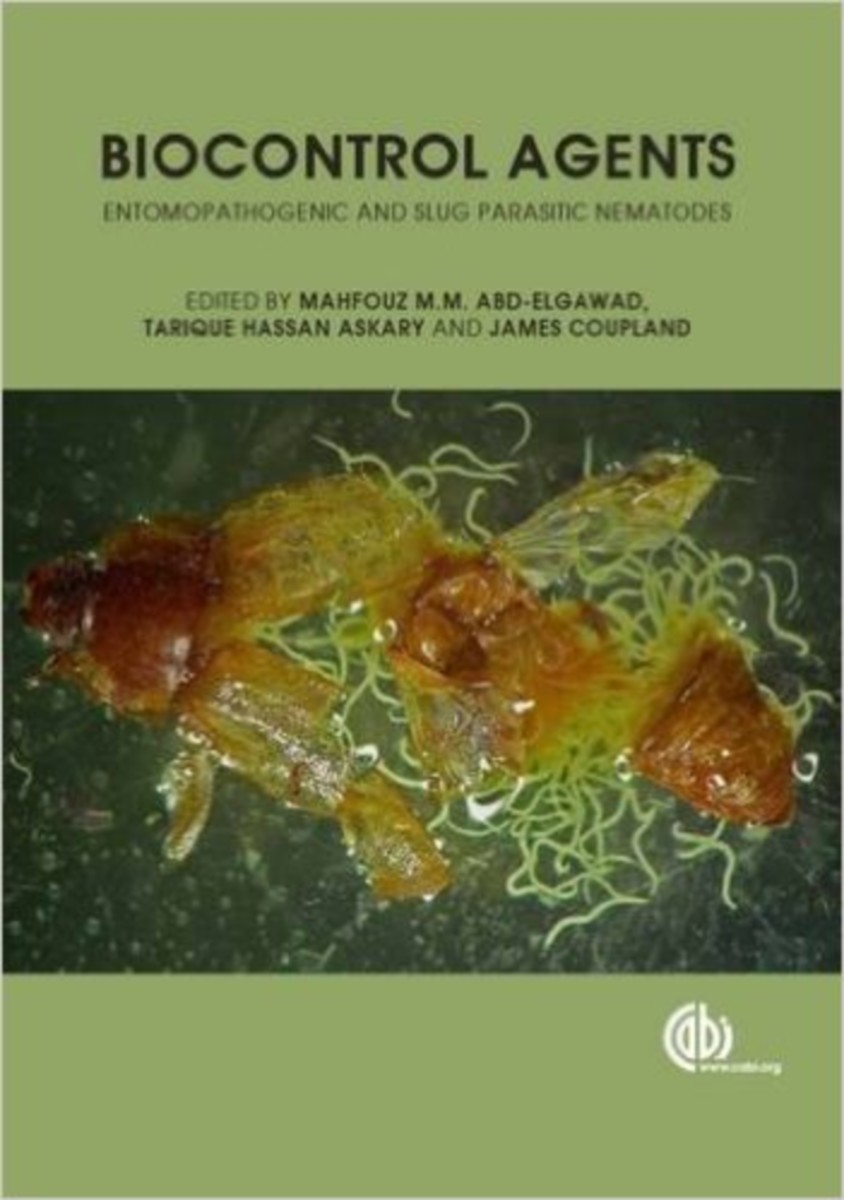Biocontrol Agents
Entomopathogenic and Slug Parasitic Nematodes
- Publisher
CABI - Published
21st August 2017 - ISBN 9781786390004
- Language English
- Pages 660 pp.
- Size 7.5" x 9.625"
- Images tables, figures & b/w & color illus
This book describes entomopathogenic and slug parasitic nematodes as potential biocontrol agents in crop insect and slug pest management. Addressing research on these two nematodes from tropical, subtropical, and temperate countries, it covers the new techniques and major developments regarding mass production, formulation, application, commercialization, and safety measures. Plans for future strategies to make these beneficial nematodes cost-effective and expand their use by including them in integrated pest management programs in different agro-ecosystems are also discussed.
Biocontrol Agents: Entomopathogenic and Slug Parasitic Nematodes provides a comprehensive review of the topic and is an essential resource for researchers, industry practitioners, and advanced students in the fields of biological control and integrated pest management.
PART I: BENEFICIAL NEMATODES AND CROP PROTECTION
1: Beneficial Nematodes in Agroecosystem: A global perspective
2: Beneficial Nematodes and the Changing Scope of Crop Protection
PART II: ENTOMOPATHOGENIC NEMATODES - MORPHOLOGY, TAXONOMY, BIOLOGY AND DIVERSITY
3: Entomopathogenic Nematodes of the families Steinernematidae and Heterorhabditidae: Morphology and Taxonomy
4: Entomopathogenic Nematodes: General Biology and Behaviour
5: Entomopathogenic Nematodes: Ecology, Diversity and Geographical Distribution
6: Molecular Systematics and Phylogenetic reconstruction of Steinernema and Heterorhabditis
PART III: ENTOMOPATHOGENIC NEMATODES AND THEIR SYMBIOTIC BACTERIA AGAINST CROP INSECT PESTS
7: Efficacy of Entomopathogenic Nematodes against Lepidoptran Insect Pests
8: Efficacy of Entomopathogenic Nematodes against Coleopteran Pests
9: Efficacy of Entomopathogenic Nematodes against Dipteran Pests
10: Control of Stored Grain Pests by Entomopathogenic Nematodes
11: Toxic Secretions of Xenorhabdus and its Efficacy against Crop Insect Pests
12: Toxic Secretions of Photorhabdus and its Efficacy against Crop Insect Pests
13: Entomopathogenic Nematodes: Mass Production, Formulation and Application
Part IV: ROLE OF ENTOMOPATHOGENIC NEMATODES IN INTEGRATED PEST MANAGEMENT
14: Status of Entomopathogenic Nematodes in Integrated Pest Management Strategies in the USA
15: Status of Entomopathogenic Nematodes in Integrated Pest Management Strategies in Canada
16: Status of Entomopathogenic Nematodes in Integrated Pest Management Strategies in Argentina
17: Status of Entomopathogenic Nematodes in Integrated Pest Management Strategies in Brazil
18: Status of Entomopathogenic Nematodes in Integrated Pest Management Strategies in India
19: Status of Entomopathogenic Nematodes in Integrated Pest Management Strategies in Pakistan
20: Status of Entomopathogenic Nematodes in Integrated Pest Management Strategies in South Africa
21: Status of Entomopathogenic Nematodes in Integrated Pest Management Strategies in Italy
22: Status of Entomopathogenic Nematodes in Integrated Pest Management Strategies in Poland
23: Status of Entomopathogenic Nematodes in Integrated Pest Management Strategies in China
24: Status of Entomopathogenic Nematodes in Integrated Pest Management Strategies in Egypt
Part V: GENETICS FOR ENHANCING EFFICACY IN ENTOMOPATHOGENIC NEMATODES
25: Genetic Improvement of Entomopathogenic Nematodes for Enhanced Biological Control
26: Breeding of Entomopathogenic Nematodes for enhanced Insect Pest suppression
Part VI: SLUG PARASITIC NEMATODES
27: Slug Parasitic Nematodes: Biology, Parasitism, Production and Application
28: The Discovery and Commercialization of a Slug Parasitic Nematode
29: Phasmarhabditis: The Slug and Snail Parasitic Nematodes in North America
Part VII: COMMERCIALIZATION AND FUTURE PROSPECTS
30: Compatibility between Entomopathogenic Nematodes and Phytopharmaceuticals
31: Strategies for making Entomopathogenic Nematodes a Cost-Effective Biocontrol Agent
32: Future thrusts in expanding the use of entomopathogenic and slug parasitic nematodes in agriculture
M. M. Abd-Elgawad
M. M. Abd-Elgawad is with the National Research Centre, Giza, Egypt.
Tarique Hassan Askary
Tarique Hassan Askary teaches at the Sher-e-Kashmir University of Agricultural Sciences and Technology of Kashmir (SKUAST-K), India.
James Coupland
James Coupland is with Farm Forest Research Inc, Canada.


